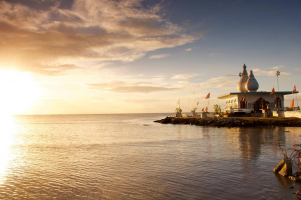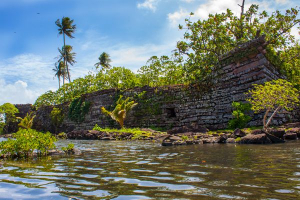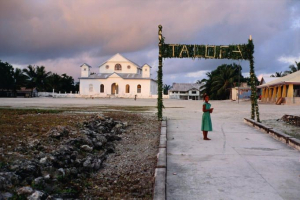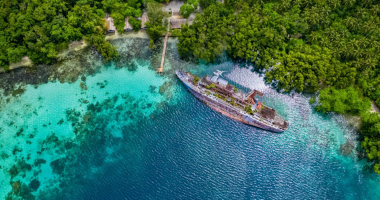Top 5 Most Beautiful Historical Sites In Nicaragua
Do you want to learn about Nicaragua's history over the ages? Nicaragua has a multitude of historical sites, such as time-honored buildings, palaces, and ... read more...parks, where you may learn about Nicaragua's illustrious past. These historical landmarks and museums will take you on a journey through Nicaragua's rich history. If you want to learn more about Nicaragua's history, Toplist recommends taking a superb guided tour that covers the key historical structures in Nicaragua. Make sure to look over the entire list of the most beautiful historical sites in Nicaragua for a fantastic trip!
-
Among the most beautiful historical sites in Nicaragua, Iglesia de La Merced was built in 1539 and is located about three blocks west of Parque Central. But, like many other Granada landmarks, it has been destroyed and rebuilt several times over the ages. The existing facade, which appears to be in need of repair, dates from the 1780s. More damage in the 1850s necessitated the interior's reconstruction in 1862.
The bell tower is a centerpiece of Iglesia de la Merced. You can ascend to the summit and enjoy 360-degree views over Granada's rooftops. The Cathedral of Granada and Lake Nicaragua are located to the east. Mombacho Volcano is located to the south. The city's tiled rooftops may be seen in all directions. Therefore, climb the bell tower flanking the church for panoramic views of the city and beyond, encompassing many significant urban and natural features.
As you climb, you'll notice the exposed ropes for the church bells. Nearby are signs in multiple languages explicitly warning visitors not to ring the bells, a sure indicator that cheeky travelers have done just that.
Address: Calle Real Xalteva Barrio Xalteva, Granada, Nicaragua

https://www.tripadvisor.com/ 
https://www.tripadvisor.com/ -
The Catedral de la Asunción is Central America's largest cathedral. The La Asuncion Cathedral, located in Leon's center plaza, was the city's most important structure. This is a must-see in Leon, as it is rich in history and stories. The majestic 18th-century cathedral, a World Heritage Site, was Nicaragua's first Catholic diocese. It is among the most beautiful historical sites in Nicaragua. Admire the magnificent structure, which was created in an eclectic blend of architectural styles such as Baroque, Gothic, and Neoclassical.
Step inside to witness the brilliant interior, which includes important artworks such as a Flemish altarpiece and a depiction of the stations of the cross by national artist Antonio Sarria. Some notable nationals, notably poet Ruben Dario, are buried here. You can also ascend to the rooftop, where you will enjoy a great view of Leon and the volcanos.
You may enjoy some local fresh fruits, ice cream, and local performances in the central plaza, which also has restrooms.
Address: Calle Rubén Darìo, Av. Central Nte., León, Nicaragua

flickr.com 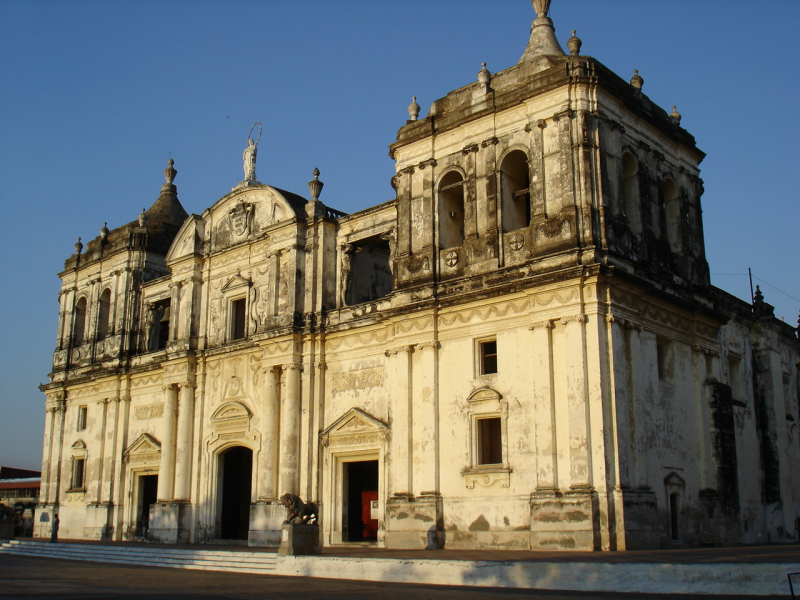
es.wikipedia.org -
The Cathedral of the Incarnation, often known as Granada Cathedral (Catedral de Granada), is a Roman Catholic church in the city of Granada, seat of the province of the same name in the Autonomous Region of Andalusia, Spain. The cathedral serves as the Archdiocese of Granada's seat. After the reconquest of Granada, it was built on top of the city's great mosque, as were many other cathedrals in Andalusia.
Because of its five naves that entirely encompass the cross, Granada's cathedral has a rectangular basis. The five naves are all staggered in height, with the central one being the tallest. Two towers stand at the foot of the cathedral. The left one, known as the San Miguel Tower, serves as a buttress, replacing the planned tower on that side.
The main chapel is made up of a series of Corinthian columns with capitals that support the entablature and a vault that houses a number of beautiful stained glass windows.
The facade is made up of a framed structure in the shape of a triumphal arch, complete with portals and canvas. It is composed of three pillars crowned by semicircular arches supported by pilasters, comparable to Leon Battista Alberti's San Andrés de Mantua. The pilasters lack capitals in favor of projections sculpted in the walls and connected marble medallions. A marble tondo from "José Laughing on the Annunciation" may be found above the main entry. There is also a vase with flowers on top, pointing to the virgin and pure aspect of the mother of God.
The sacrarium, built between 1706 and 1759, adheres to the classic proportions of the entire, with the numerous columns of the transept retaining the outlines of the Siloam compound. Catedral de Granada is regarded as one of the most beautiful historical sites in Nicaragua.
Address: Costado Este del Parque Central,Granada 43000 Nicaragua

en.wikipedia.org 
https://www.tripadvisor.com/ -
Santiago of Managua Cathedral, often known as the Old Cathedral of Managua, is one of Nicaragua's most notable cathedrals. Amazing ruins can be seen here, including a notable neoclassical façade. However, its interior was destroyed by the 1972 earthquake. This well-known monument in Nicaragua was created by Belgian architects in the neoclassical style.
Explore the medieval remains of Santiago of Managua Cathedral, a city-important historical landmark. Since its construction began in 1928, the cathedral has been subjected to multiple earthquakes. However, it was the terrible earthquake in Nicaragua in 1972 that forced the building's closure. Many believed that the structure was beyond repair, but in recent years, efforts for reconstruction and reopening of the site have begun.
Although you cannot enter the cathedral, its outside is stunning. Look up at the two complete towers, which are claimed to depict San Pedro and San Pablo and are supported by Christ from the central structure. Every history fan and first-time visitor to Managua must see the ruins of Santiago de Managua Cathedral. Among the most beautiful historical sites in Nicaragua, this site's breathtaking splendor and historical significance are likely to impress you.
Address: Managua 11001, Nicaragua

en.wikipedia.org 
atlasobscura.com -
The early 16th century Ruins of Leon Viejo were discovered by Francisco Hernández de Córdoba, the Spanish conquistador and founder of Nicaragua. Córdoba discovered the location in 1524 and was killed in a military coup two years later by his lieutenant Pedrarias Dávila. The area had a native population of 15,000 people before being established by Spanish colonists, who converted it into a financial centre because to the city's abundance of wealthy gold merchants. After the adjacent Momotambo volcano erupted in 1610, the city shifted 30 kilometers (18 miles) to the west. The old city was never destroyed; it was simply covered in ash, and excavations since have exposed the ruins beneath. Visitors should bring a camera to photograph the volcano from the ruins.
In 2000, the Ruins of Leon Viejo were designated a UNESCO World Heritage Site. This popular monument in Nicaragua is well-maintained, and you will be accompanied by a guide who will show you around. There are numerous signboards that provide information about the city's history. You can go up a hill to get a good view of the lake, the Momotombo volcano, and the other volcanoes that surround the city. During the dry season, wasps can be plentiful in León Viejo, so dress in long-sleeved sweaters and slacks.
Address: Puerto Momotombo, Leon, Nicaragua

whc.unesco.org 
flickr.com








